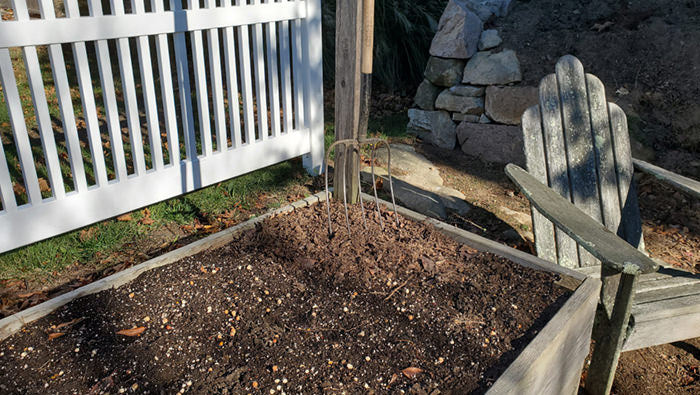
Putting the Vegetable Garden to Bed
At some point during every year, we need to completely clean out our vegetable gardens. It can be done all at once or in stages, depending on if we plan to plant a new crop (garlic or winter spinach), cover crop (peas, rye or wheat) or use a mulch (I do all three!). Most people do this in late fall or early winter. It’s not just to make the garden look tidy over the coldest part of the year, although seeing the dead remains of tomato plants does look unsightly! Cleaning out the garden each year helps avoid problems the following year.
Here are the 5 basic chores for the end of your growing season:
- Remove dead plants, discarded fruits, debris and weeds which can harbor diseases and insect pests. Remove them completely, don’t put them in the compost pile. Most home compost piles do not get hot enough to kill disease and you don’t want to spread an old problem to a new area.
- Do a soil test NOW! While it’s fresh in your mind, evaluate how your vegetables did this year. Often plants don’t thrive because they lacked something; a specific nutrient or incorrect pH. Adding nutrients, lime, or elemental sulfur need time to interact with the soil bacteria to have an effect. Fall is a great time to add them.
- Till your soil 4-6” deep if you add any nutrients. If you don’t add nutrients, then leave the soil as undisturbed as possible. Too much tilling can destroy the soil structure and kill good bacteria.
- If you aren’t going to plant a fall/winter crop or cover crop, add an organic mulch like shredded leaves or compost as a 2” layer over your beds.
- Plant a cover crop or ‘winter crop’ (see our ‘Should I Plant a Cover Crop’ or ‘Fall Planting for Additional Harvests’)
Don’t’ forget to clean and disinfect all garden tools, tomato cages and supports. They can harbor diseases too. Doing these tasks now will give you more time in the spring to enjoy the coming season and ensure a healthy and productive garden!
